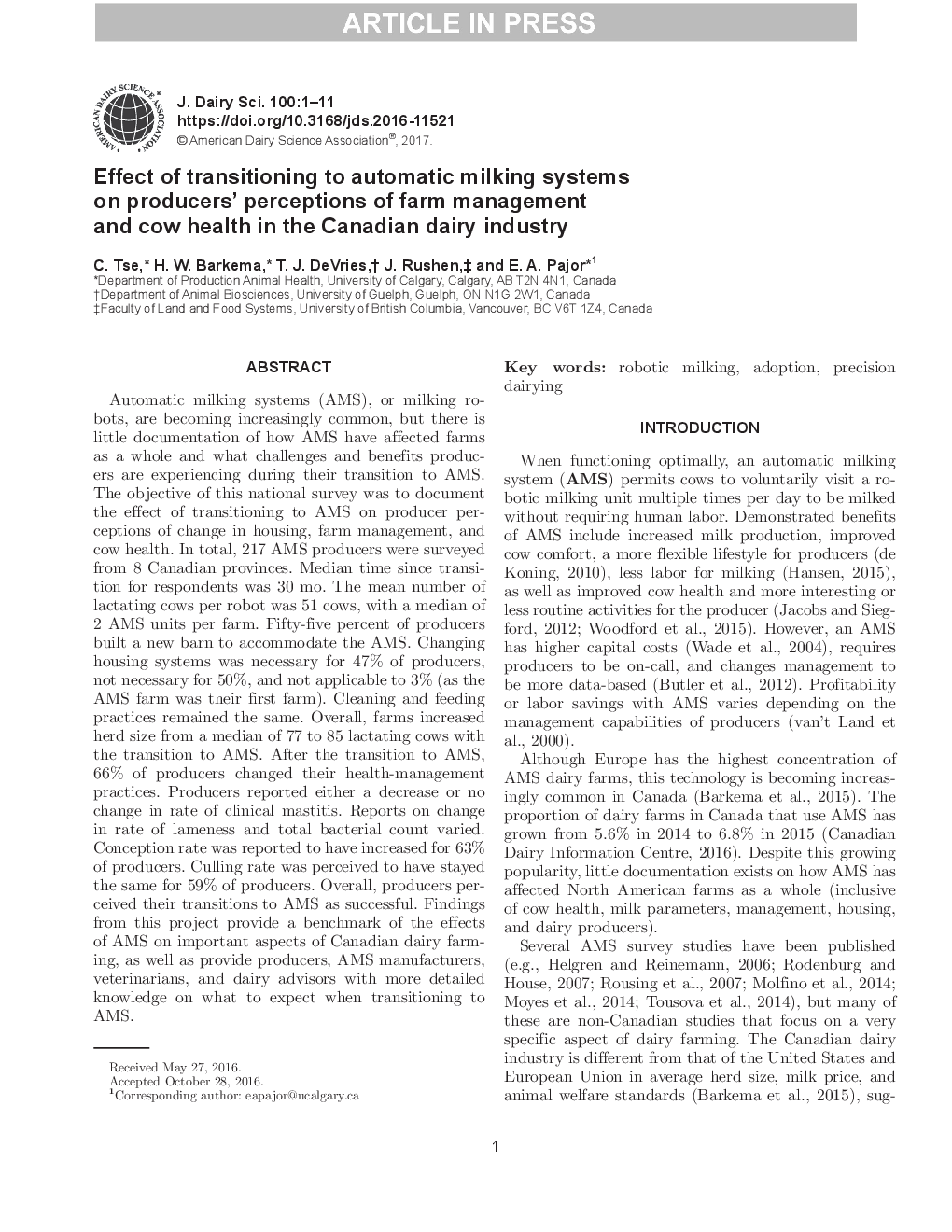ترجمه فارسی عنوان مقاله
تأثیر گذار به سیستم های شیردوشی اتوماتیک بر ادراک تولیدکنندگان از مدیریت مزرعه و سلامت گاو در صنعت لبنی کانادا
عنوان انگلیسی
Effect of transitioning to automatic milking systems on producers' perceptions of farm management and cow health in the Canadian dairy industry
| کد مقاله | سال انتشار | تعداد صفحات مقاله انگلیسی |
|---|---|---|
| 100412 | 2017 | 11 صفحه PDF |
منبع

Publisher : Elsevier - Science Direct (الزویر - ساینس دایرکت)
Journal : Journal of Dairy Science, Volume 100, Issue 3, March 2017, Pages 2404-2414
ترجمه کلمات کلیدی
شیردوشی رباتیک، تصویب، لبنیات دقیق،
کلمات کلیدی انگلیسی
robotic milking; adoption; precision dairying;

